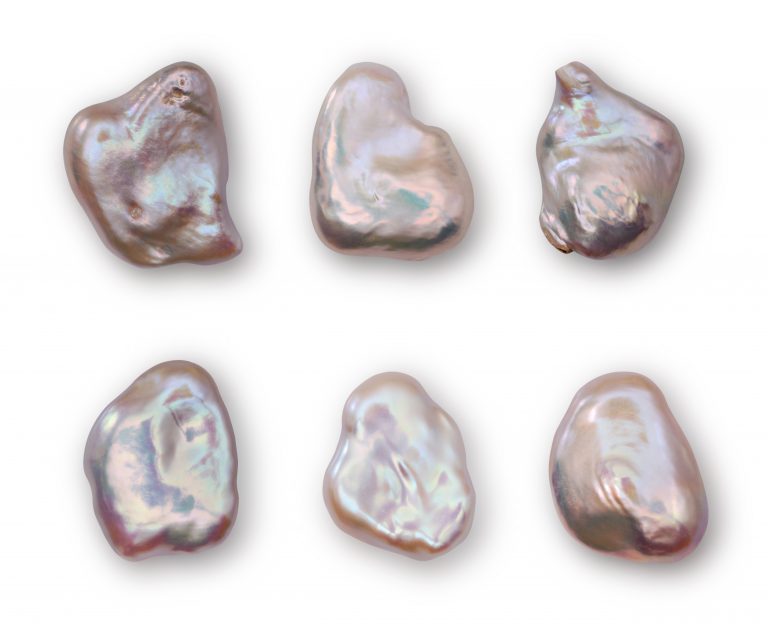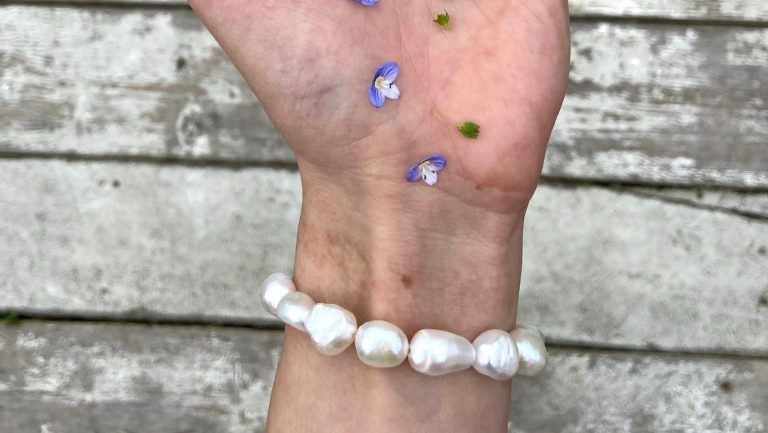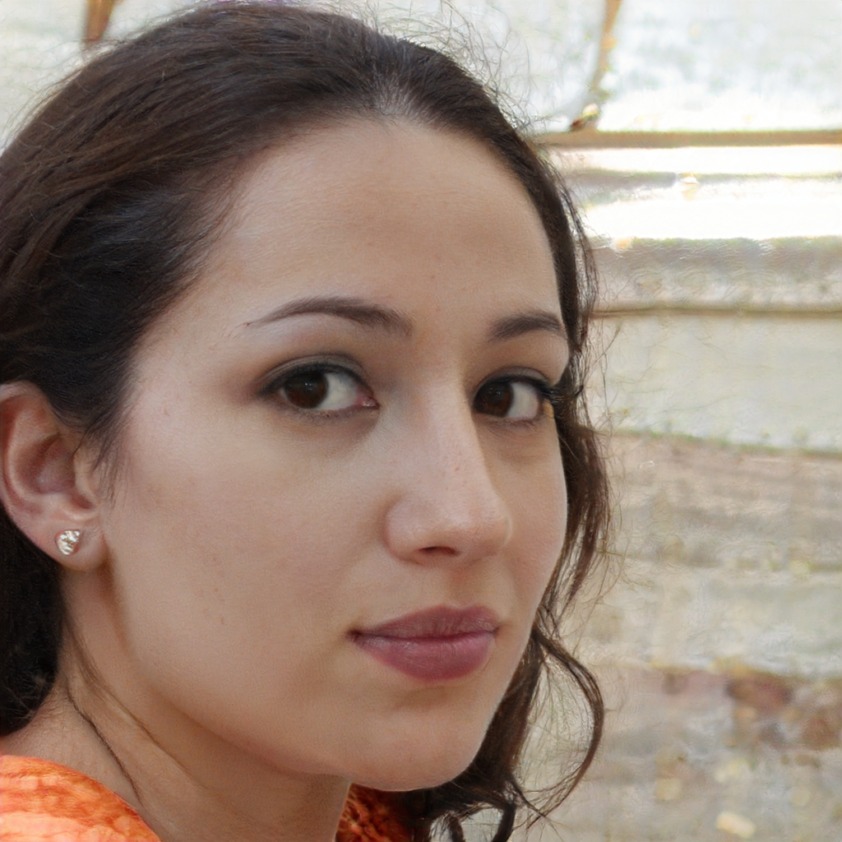Pearls have been a classic choice for jewelry for a very long time. Traditionally, pearls are perfectly spherical and smooth. While this look is extremely sophisticated, some people might find them a little too classic. Baroque pearls offer the same elegant look, but with a twist. They are a perfect choice for the modern fashionista looking to stand out – someone who values uniqueness.
Jump To a Section Below
- What are Baroque Pearls?
- Where Do Baroque Pearls Come From?
- Are Baroque Pearls Real Pearls?
- Why Are They Called Baroque Pearls?
- What Is The Difference Between Baroque and Keshi Pearls?
- How Many Shapes Do Baroques Come In?
- Why Are Some Baroque Pearls So Expensive?
- How To Choose Baroque Pearls
- How To Identify Real Baroque Pearls
- What Are Semi Baroque Pearls?
- How To Care For Baroque Pearls
What are Baroque Pearls?

“Baroque” is the name given to one of the two types of pearls, one being traditional, and the other baroque. Baroque is an umbrella term for pearls with irregular shapes. They might be long, flat, or pear-shaped, or they may even have multiple points. What may be confusing, is that there is a subtype of baroque pearl that’s also called baroque, but that will clarify itself later in this article.
These pearls were seen as inferior in the 1900s, when commercial pearl cultivation began, but the tables have clearly turned and they continue to increase in popularity.
Where Do Baroque Pearls Come From?
If you’re wondering where pearls come from, you may be surprised to discover they can differ somewhat in origin, although the fundamentals stay much the same.
The majority of baroque pearl come from freshwater cultivation. Over 90% of freshwater pearls are baroques, making “misshapen” the truest shape of pearls. That’s why baroque pearl is more affordable.
The reason freshwater baroque pearl is the most common is that freshwater muscles are tissue nucleated instead of bead-nucleated. They create organic shaped pearls because they don’t have a template to grow them from. Saltwater and even cultured pearls, such as Akoya, Tahitian, and South Sea, can also form in baroque shapes, though less commonly.
Are Baroque Pearls Real Pearls?
Baroque pearl is the most common type of pearls in freshwater cultivations. Although we’re much more used to seeing traditional pearls, baroque pearl is actually the most commonly found pearls in nature.
Why Are They Called Baroque Pearls?
The term “baroque” comes from the Portuguese word barocco, meaning an imperfect, coarse or uneven pearl. A French dictionary from 1694 defines “baroque” as describing a pearl that is imperfectly round.
What Is The Difference Between Baroque and Keshi Pearls?
Baroque pearl, as mentioned earlier, are also a subtype of the vaster family of baroque pearl. That’s what we’re talking about here. The major difference between these two pearl subtypes is that keshi pearls are always non-nucleated, meaning they’re made up of 100% nacre. Keshi pearls come in all kinds of crazy shapes and have incredible luster, making them the rarest baroque pearls on the market.
How Many Shapes Do Baroques Come In?
There are 12 subtypes of baroque pearls. They are all misshapen, but there are some characteristics shared by the specimens of different subtypes. Here is a list of the different types you might find.
- Baroque Pearls – These pearls are shaped like slightly elongated spheres with uneven surfaces.
- Keshi Pearls – These non-nucleated (lacking a beaded nucleus) pearls are 100% solid nacre and come in all shapes.
- Coin Pearls – Coin pearls are round, flat and smooth, which earned them their name. They are valued for their luster and are used in incredibly beautiful jewelry designs.
- Potato Pearls – These are large, roundish, potato-shaped pearls that have a pleasant color and good luster.
- BIWA/Stick Pearls – These long, thin pearls make great choices for earrings or pendants thanks to their odd shape.
- Rice Pearls – These pearls resemble rice with their tiny and roundish shape. They are best used in cluster jewelry and are very affordable.
- Teardrop Pearls – These, as you might guess, are teardrop shaped pearls, with a narrow top and wide, rounded bottom. They are a favourite for classy jewelry and are often worn by celebrities and royalty.
- Cross Pearls – These are incredibly rare pearls in which the nacre has formed a cross shape. They are popular for religious jewelry.
- Twin Pearls – These pearls form when two pearls, possibly of different shapes, join together.
- Egg Pearls – These pearls bear a good resemblance to an egg. Their shape is like teardrop pearls, but not as extreme.
- Heart Pearls – Heart pearls are like coin pearls in their flatness, except they’re shaped as hearts, making them excellent for romantic jewelry.
- Leaf Pearls – Leaf pearls are the thinnest baroque shaped pearls. They are incredibly thin, with a very bumpy surface.
Why Are Some Baroque Pearls So Expensive?
The most important aspect to consider is the type of baroque pearl in question. This is followed by their shape, size, luster, and color. The most popular forms of baroque pearls are keshi, baroque and cross pearls.
Darker colored pearls are more expensive because of their rarity. The method of cultivation also makes a difference to the cost of baroque pearl. Akoya pearls, for example, are far more valuable than freshwater baroque pearls.
How To Choose Baroque Pearls
When buying baroque pearl jewelry, consider the setting of the pearl and the quality of the jewelry. Also, keep in mind that the type of pearl makes a difference to the value, with freshwater pearls being the cheapest and South Sea or Tahitian pearls being much more valuable.
Besides that, these pearls are perfect for people who are looking for something different from the norm, so choose one that appeals to your nature.
How To Identify Real Baroque Pearls
First, take their temperature. Real pearls are cold to the touch and take a few seconds to warm up. Real pearls also have a slight overtone color of either pink or green, while fake ones will only have one color.
Pearls should have irregular shapes and are slightly textured on the surface. They would also be heavier than fakes, and usually have tiny drill holes.
What Are Semi Baroque Pearls?

These are pearls that are only somewhat asymmetrical. They might have been considered round, or oval-shaped, but have some or other deformation.
How To Care For Baroque Pearls
The material that pearls are made of, nacre, is susceptible to harsh chemicals such as those found in perfume, hairspray, and other body products. Exposure to these chemicals will slowly dull the luster of your pearls.
It’s best to put on your pearl jewelry as the last step in your routine. When you’re done wearing them, you can clean them gently with a soft fabric and pack them away safely until next time!

Chermaine’s journey into the world of gemstones and crystals began as a child, collecting shimmering stones on family vacations. Today, she’s a certified gemologist and spiritual healer, intertwining the physical beauty of jewels with their metaphysical properties.
Chermaine has traveled to mines in Africa, marketplaces in India, and spiritual retreats in Bali, always seeking to deepen her understanding.